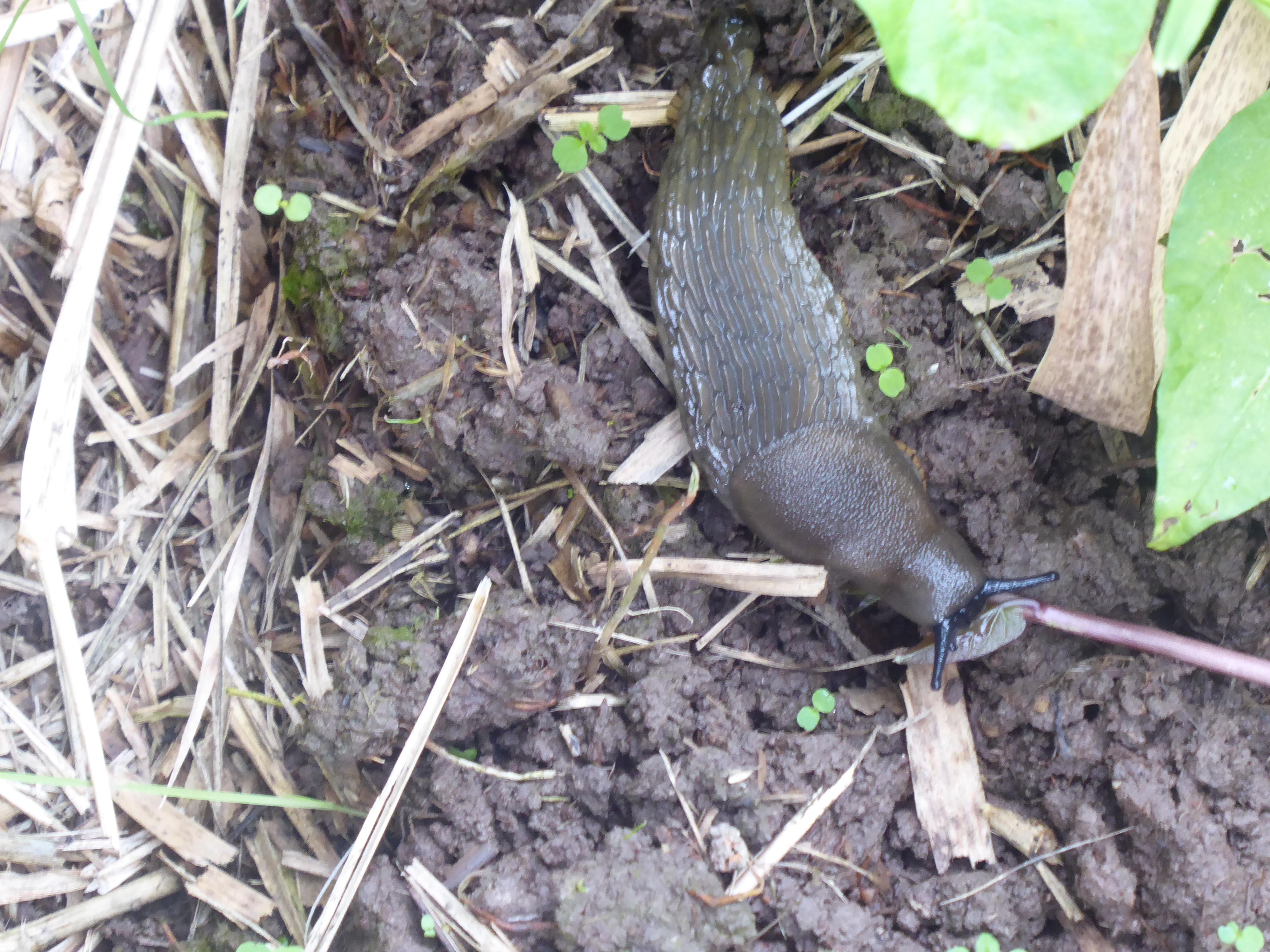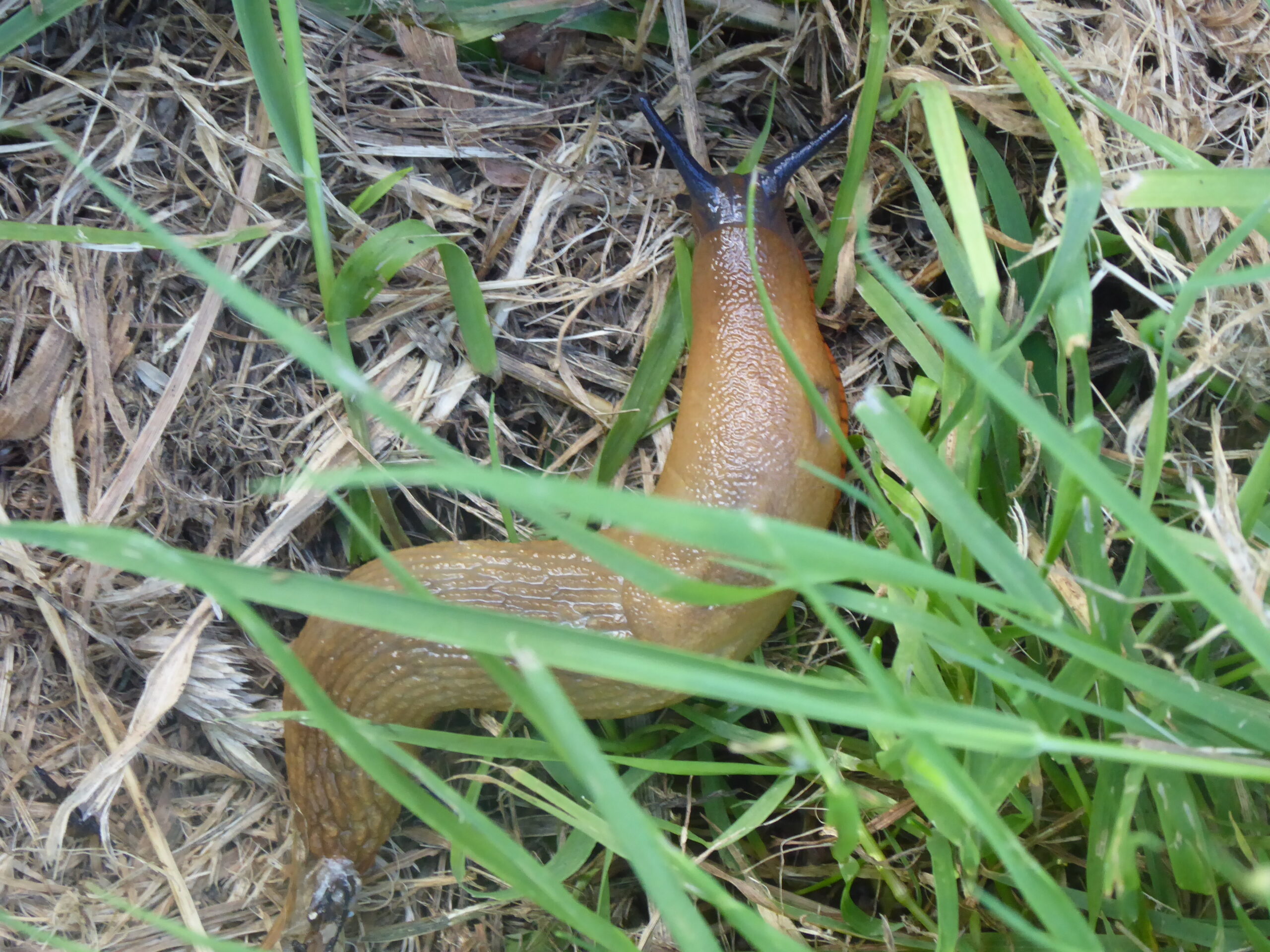The Large Red Slug (Arion rufus) always has an orange skirt and tends to orange nearer the head, as per this individual.

This is a Spanish Slug (Arion vulgaris). It’s a dark sludge coloured slug, but not quite black. I believe it to be a Spanish slug as its sole is darker than the body sides, but this is not conclusive as there are variations and hybridisations among the slug population, which means it is regularly confused with other Arion species. Apparently, the only foolproof method of correctly identifying them is by dissection, so I’d rather pass on being 100% accurate, if that’s okay.
Slugs eat plant leaves, stems, and roots, plant debris and decaying matter, fungi, and earthworms. They can generally be seen at night in spring, summer and autumn in the garden, hedgerows meadows and woods.
Why are slugs so slimy? Their slime has many uses. It prevents them from drying out, helps to propel them forward and makes them taste bad to potential predators. Finally, when they discover a yummy food source, they can follow their slime trail from the night before back to their dinner.
